 July 2, 2015 John E. Ross, KD8IDJ, Editor
| ||||||
ARRL Headquarters Will Be Closed on Friday, July 3: ARRL Headquarters will be closed on Friday, July 3, in observance of Independence Day. There will be no edition of ARRL Audio News and no W1AW bulletins or code practice on July 3. We wish everyone a safe and enjoyable holiday weekend! The Amateur Radio Parity Act of 2015 Introduced in the US Senate A companion Amateur Radio Parity Act of 2015 bill has been introduced in the US Senate. Mississippi Republican Sen Roger Wicker introduced S. 1685 on June 25, with Connecticut Democratic Sen Richard Blumenthal as the initial cosponsor. The Senate bill joins "Introduction of the Senate bill is a huge step toward achieving fairness for amateurs affected by private land-use regulation," said ARRL President Kay Craigie, N3KN. "For them and for the future of Amateur Radio, I thank everyone who contributed to making this progress. Now let's finish the job!" Wicker said the bill he introduced with Blumenthal's cosponsorship would allow for transparency and equality in the regulatory process. He said in a June 29 media release that the legislation would ensure that Amateur Radio operators are able to continue to provide "critical communications support at no cost to taxpayers."
"This would be particularly beneficial in Mississippi and other rural states," Wicker said. "During Hurricane Katrina, Mississippians learned firsthand the value of Amateur Radio, and its ability to provide information that could save lives in times of natural disasters." According to Wicker, the measure "ensures âincreased access to, and availability of, critical resources and communication tools" to first responders. Added Blumenthal, "We have seen the effectiveness of these systems, and the need to provide these emergency response systems to Americans, regardless of where you live, is evident." Wicker pointed out that private land-use restrictions prevent many hams from installing functional outdoor antennas. "This bill would call on FCC to apply the reasonable accommodation policy evenly to all types of residential land-use regulations and offer Amateur Radio operators the ability to negotiate with subdivisions that now have restrictions that preclude Amateur Radio antennas completely," he said. "This could be accomplished without taking any jurisdiction away from homeowners associations and would protect neighborhood aesthetics." S. 1685 has been referred to the US Senate Committee on Commerce, Science, and Transportation, chaired by Sen John Thune (R-SD). The House version of The Amateur Radio Parity Act of 2015 had attracted support from 83 cosponsors, as of July 1. ARRL Website Has New Amateur Radio Parity Act of 2015 Page Now that there is Amateur Radio Parity Act of 2015 legislation in both chambers of the US Congress, the League has a combined web page to accommodate activities on behalf of both bills. The Amateur Radio Parity Act of 2015 is H.R. 1301 in the US House of Representatives and S. 1685 in the US Senate. The Amateur Radio Parity Act of 2015 page provides a clearinghouse for all information on these identical pieces of legislation.
The bill would require the FCC to amend its Part 97 Amateur Service rules to apply the three-part test of the PRB-1 federal pre-emption policy to include homeowners association regulations and deed restrictions, often referred to as "covenants, conditions, and restrictions" or CC&Rs. PRB-1 now only applies to state and local zoning laws and ordinances, and the FCC has been reluctant to extend the same legal protections to include such private land-use agreements without direction from Congress. ARRL members are urged to write their members of Congress in both the House and the Senate, asking them to sign on to the bill as cosponsors. Route letters to your member of Congress to ARRL, ATTN Amateur Radio Parity Act Grassroots Campaign, 225 Main St, Newington, CT 06111. Correspondence will be sorted at ARRL Headquarters and hand delivered to the appropriate US representatives and senators. Letters should include the sender's name and address. FCC Invites Comments on Proposed Rules for New LF and MF Amateur Allocations The FCC is inviting comments on its recent proposals to authorize Amateur Radio operation on two new bands -- an LF allocation at 135.7 to 137.8 kHz (2200 meters), and an MF allocation at 472-479 kHz (630 meters). Amateur Radio would be secondary on both bands. Comments are due August 31. Reply comments -- ie, comments on comments filed -- are due by September 30. The FCC allocated 135.7 to 137.8 kHz to the Amateur Service in accordance with the Final Acts of the 2007 World Radiocommunication Conference (WRC-07). The proposed new allocation at 472 to 479 kHz would implement decisions made at WRC-12.
Amateur Radio stations are not permitted in either band until the FCC adopts, on the basis of comments, specific technical and operational Part 97 rules. Power line carrier (PLC) systems operated by utilities to control the power grid already operate under Part 15 of the FCC rules in both frequency ranges, particularly the lower of the two. With respect to the new 630 meter band, the FCC has concluded that Amateur Radio and PLC systems "can successfully coexist in the band," and noted that there has been no reported interference to PLC operation resulting from experimental operations there. The FCC said PLC systems and anticipated Amateur Radio use of both 630 meters and 2200 meters "have characteristics that make coexistence possible." In general, the FCC wants to hear from the public regarding power limits, antenna placement and height, and geographical limitations for operation in the proposed LF and MF allocations. The FCC has said that the "cornerstone" of the technical rules it's proposing for both bands is "physical separation between amateur stations and the transmission lines" carrying PLC signals. The FCC has said that if it concludes, after considering the record, that Amateur Radio and PLC systems cannot coexist on 135.7-137.8 kHz, it would "defer the adoption of service rules, and amateur users will have to continue to use the experimental licensing process to operate in the band." In 2012, the ARRL submitted a Petition for Rule Making asking the FCC to allocate 472-479 kHz to the Amateur Service on a secondary basis and to amend the Part 97 rules to provide for its use. Several countries, including Canada, already have access to the band. The FCC said the addition of the new LF and MF allocations "would provide new opportunities for amateur operators to experiment with equipment, techniques, antennas, and propagation phenomena but with signals having larger bandwidth and higher power." In addition, the FCC has raised the secondary Amateur Service allocation at 1900 to 2000 kHz to primary, while providing for continued use by currently unlicensed commercial fishing vessels of radio buoys on the "open sea." The Commission is seeking comment on technical requirements to govern operation of the Part 80 radio buoys. Interested parties may submit comments, identified by ET Docket No 15-99, via the FCC Electronic Comment Filing System (ECFS). The ARRL will file comments in this proceeding. FCC Speedily Dismisses Petitions to Alter Amateur Service Rules Acting with near lightning speed, the FCC has dismissed two petitions for rule making calling for separate amendments to the Part 97 Amateur Service rules. Willison H. Gormly, WD0BCS, of Des Moines, New Mexico, filed both petitions on June 16, and the FCC turned them away on July 1. Gormly had requested that the FCC amend §97.301(e) of the rules by dividing it into separate sub-paragraphs for technician and Novice class privileges. He had also asked the FCC to amend §97.305(c) to authorize spread spectrum emissions in the 2 meter band.
The FCC noted that while §97.301(e) had been divided into two paragraphs in the past, these were consolidated when the Commission streamlined the rules in 1999. Gormly argued that the present configuration was confusing, but the FCC pointed out that §97.301 "has been in this arrangement for a number of years without any reported difficulty." Regarding Gormly's second petition, the Commission noted that it had sought comment in 2004 as to whether it should expand the bands authorized for spread spectrum to permit such emissions on the 50 MHz, 144 MHz, and 222 MHz bands. Agreeing with the majority of comments, the FCC subsequently determined that authorizing spread spectrum was not warranted on 6 meters and 2 meters, "because of concerns over the compatibility of spread spectrum emission types and other Amateur Radio operations in those bands," the FCC explained in its denial letter. Read more. W1AW/5 Will Represent ARRL Headquarters in the 2015 IARU HF World Championship The summer's most popular HF contest -- The 2015 International Amateur Radio Union (IARU) HF World Championship -- gets under way on July 11 at 1200 UTC and continues for 24 hours. The object of the contest is to contact other amateurs around the world -- especially IARU officials and member-society HQ stations -- in as many ITU zones as possible on 160, 80, 40, 20, 15, and 10 meters -- using CW and "July is monsoon season in New Mexico," he said. "It's not unusual to have thunderstorms that just sit there over large areas, for hours." Participating IARU member-society headquarters stations and officials count as score multipliers. Members of the IARU Administrative Council and the three IARU regional executive committees send a signal report plus "AC," "R1," "R2," and "R3," as appropriate. Other stations send a signal report plus ITU zone, and contact points vary from 1 to 5 points, depending on the other station's ITU zone. The IARU offers a variety of entry categories, and single operators can operate SSB only, CW only, or a mixture of both modes. Power categories include High Power (greater than 150 W), Low Power (between 5 W and 150 W), or QRP (5 W or less). This year new Unlimited categories have been added for operators using assistance. There is also a Multioperator, Single Transmitter category, so several friends can get together to operate from one station. The IARU HF Championship offers a lot of summertime operating enjoyment and a chance to check out your station and antennas well in advance of the 2015-2016 contest season. There's plenty of room for casual operators too. Submit logs via e-mail. Mail paper logs to IARU International Secretariat, Box 310905, Newington, CT 06111-0905 USA. All logs must be e-mailed or postmarked no later than 1200 UTC on August 11, 2015. Pattern of CQ WW Contact Padding Prompts Disqualifications, Review of Past Contest Logs The CQ World Wide Contest Committee said on June 25 that it plans to review all past CQ WW contest logs, after its investigation revealed a pattern of routine QSO padding on the part of one top-scoring CQ WW participant. This follows in the wake of the disqualifications of some two dozen 2014 CQ WW SSB contest operators in April, and another 30 contestants in the 2014 CQ WW CW event. Among the latter group of DQs was the TO7A entry of Dmitry V. Stashuk, UT5UGR, of Kiev, Ukraine, for unclaimed use of assistance. TO7A had claimed the top Single Operator, High Power score.
The contest committee subsequently decided to dig more deeply into past contest logs submitted by UT5UGR, many of them competitive entries, including one for a record continental score, and it uncovered evidence of log padding going back to 2008, when UT5UGR placed third in the world in the Single Operator, High Power category from V31WA in the CQ WW CW.
As a result, CQ has disqualified UT5UGR's entries in which they detected log padding and removed them from the official score database. In addition, any entry into a CQ-sponsored contest until July 2020 in which UT5UGR is the operator or listed as a participant will be reclassified as a checklog. "This violation of the trust that underlies radiosport competition cannot be ignored," CQ said. The CQ WW Contest Committee has announced that new log checking processes were being developed to improve the detection of log padding. "We intend to test these methods against all submitted logs from 2011-2014. If other entries are found to have added unverifiable QSOs, we will address them on a case by case basis," CQ said. Stashuk did not respond to an ARRL e-mail seeking comment. Read more. CEDAR Conference Participants Dig Into Science of Interest to Radio Amateurs It was a meeting of the minds as more than 300 scientists -- many of them radio amateurs -- met at the University of Washington in Seattle during the week of June 21 for the annual National Science Foundation-sponsored Coupling, Energetics, and Dynamics of Atmospheric Regions (CEDAR) Conference. CEDAR is a broad-based, community-guided upper-atmosphere research program. The program focuses on the science of atmospheric regions from the middle atmosphere (~30 km altitude) through space. This region includes the ionosphere, and the CEDAR workshop discussed issues highly relevant to Amateur Radio HF propagation.
Noteworthy topics at the CEDAR workshop included ionospheric and neutral atmospheric response to geomagnetic storms and space weather, atmospheric gravity waves and traveling ionospheric disturbances, and the coupling of the ionosphere and middle atmosphere to space. Frissell delivered a presentation, "Using Amateur Radio Signals with the CARINA Satellite," during the conference, in collaboration with Magda Moses, KM4EGE, a Virginia Tech undergraduate; Ethan Miller, K8GU, of JHU/APL; Steve Kaeppler, AD0AE, of SRI, and the Reverse Beacon Network (RBN). Frissell said his presentation prompted the recent experiment that had the Canadian CASSIOPE satellite listen for Field Day signals. Scientists on hand at the CEDAR event represented many major ionospheric and upper-atmosphere research programs. Moses' workshop poster presentation, "Experiment Design to Assess Ionospheric Perturbations During a Solar Eclipse," discussed how solar eclipses offer an opportunity to determine the dependence of the ionosphere on sunlight. She is working with her advisor, Gregory Earle, W4GDE, and Frissell. A total solar eclipse will occur over the US in August 2017. Moses' plan is to observe whether unique ionospheric responses may be witnessed during an eclipse. "This will be accomplished using a nationwide network of GPS receivers as well as coherent scatter radars and a variety of techniques involving Amateur Radio," her poster explained. The experiment would make use of the RBN and involve an Eclipse QSO Party.
"These conferences are extremely important, because the only way we have a chance at gaining understanding of the Earth-space system is to have the entire scientific community work together to identify strategies for making progress," Frissell said. He noted that many CEDAR talks were about building networks of instruments and sharing data to tackle problems of common interest. "This is one reason I think using the RBN -- and similar networks -- is important," he said, "because they provide a global view that complements other observational techniques." Read more. -- Thanks to Nathaniel Frissell, W2NAF Phillip Groves, N8SFO, Named as West Virginia Section Manager Phillip Groves, N8SFO, has been appointed as ARRL West Virginia Section Manager. Groves, of Beckley, succeeds the late Charles Hardy, WV8CH, of Fayetteville, who died on June 14, apparently as the result of accidental electrocution while working on an antenna at his home.
"This position will present me with new opportunities to further promote Amateur Radio participation and membership for radio clubs," Groves told ARRL Headquarters. Field Services and Radiosport Manager Dave Patton, NN1N, made the appointment, effective on June 30, after consulting with Roanoke Division Director Jim Boehner, N2ZZ, and Roanoke Division Vice Director Bill Morine, N2COP. Groves, 56, has been a radio amateur since 1991 and is active within the ARRL National Traffic System (NTS) as net control station for the West Virginia Mid-Day Net and the NTS Eighth Region Net, and, as needed, assists with the Eastern Area Net. He is a member of the Plateau Amateur Radio Association and the 8 Rivers Amateur Radio Club. A retired underground coal miner and contractor, Groves also enjoys hunting and fishing, gardening, and road trips with his wife. Groves will serve the remainder of the current term, which extends until September 30, 2017. The ARRL Letter Tops 100,000 Subscribers! For the first time in its 33-year history, The ARRL Letter -- the League's weekly e-newsletter -- has exceeded 100,000 subscribers. The tally for the June 25, 2015, edition was 100,139. The ARRL Letter is distributed free to all ARRL members who opt to receive it via their membership profile.
The ARRL Letter began as a bi-weekly, paid-subscription, 4-page newsletter delivered by postal mail to subscribers, who had to be ARRL members. The first edition was published on October 28, 1982. The focus was on delivering breaking news to members who didn't want to wait for the next issue of QST to read about it. The first editor was Peter O'Dell, KB1N (now WB2D), with Wayne T. Yoshida, KA6KGU (now KH6WZ), as associate editor. The banner headline in the first edition was, "Flash! FCC Gives 10 MHz to Hams NOW!"
Lindquist has served twice as editor of The ARRL Letter. He oversaw the transition of the newsletter from a print-only publication to an electronic publication in the mid-1990s. For more than 10 years, The ARRL Letter appeared in subscribers' inboxes as a plain ASCII text publication. After Lindquist retired from the ARRL Headquarters staff in 2007 and Khrystyne Keane, K1SFA, took over as news editor, The ARRL Letter was reconfigured as an HTML publication that included color photos and ads of interest to readers. When Keane left HQ in mid-2013, Lindquist was tapped to return as news editor, which he handles on a part-time basis from his home in Down East Maine. "Founders and Patriots of the Republic" is Theme of Annual 13 Colonies Event The annual Independence Day week 13 Colonies Special Event got under way on June 30 and will continue until July 5 at 0400 UTC. The theme for the 2015 event is "Founders and Patriots of the Republic." The object is for operators to contact special event stations in each of the 13 British colonies that became the US in 1776. The contact count for last year's event was nearly 109,000.
The 1 Ã 1 call sign stations on the air this year are K2A in New York, K2B in Virginia, K2C in Rhode Island, K2D in Connecticut, K2E in Delaware, K2F in Maryland, K2G in Georgia, K2H in Massachusetts, K2I in New Jersey, K2J in North Carolina, K2K in New Hampshire, K2L in South Carolina, and K2M in Pennsylvania. In addition to WM3PEN, UK special event station GB13COL will operate from Durham, England, with members of the Durham and District Amateur Radio Society participating. The K7RA Solar Update Tad Cook, K7RA, Seattle, reports: Conditions over Field Day weekend turned out to be not bad at all. The expected geomagnetic upset never happened. On the Thursday and Friday before Field Day, the predicted planetary A index for the June 27-28 was 45 and 60 -- really bad conditions. The actual planetary A indices on those dates were 9 and 13, and the mid-latitude A indices were a modest 8 and 12.
The latest solar flux prediction is 110, 115, 120, and 125 on July 2-5; 130 on July 6-8; 125 on July 9-10; 130 on July 11-19; then 115, 110, and 105 on July 20-22; 100 on July 23-26, and 105 on July 27-August 1. Flux values rise to 130 after August 6. Planetary A index is predicted at 5 on July 2-4; then 25, 12, 10, and 5 on July 5-8; 8 on July 9-10; 18, 12, and 8 on July 11-13; then 5 on July 14-17; 8 on July 18-19, and 5 on July 20-25. In Friday's bulletin look for reports from readers, a review of our moving average of sunspot numbers, and updated forecasts. Send me your reports and observations. Just Ahead in Radiosport
See the ARRL Contest Calendar for more information. Upcoming ARRL Section, State, and Division Conventions and Events
Find conventions and hamfests in your area.
. . .
Subscribe to...
Free of charge to ARRL members...
| ||||||
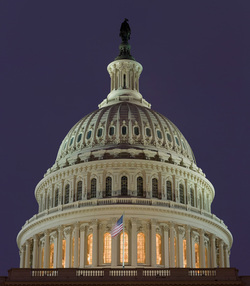 an identical measure in the US House,
an identical measure in the US House, %20Portrait.jpg)
 US Rep
US Rep .jpg) "The Commission is proposing service rules for the Amateur Service in the 135.7-137.8 kHz and 472-479 kHz bands with the principal goal of enabling sharing of this spectrum among licensed amateur stations and unlicensed PLC systems," the FCC said on April 27 in a 257-page
"The Commission is proposing service rules for the Amateur Service in the 135.7-137.8 kHz and 472-479 kHz bands with the principal goal of enabling sharing of this spectrum among licensed amateur stations and unlicensed PLC systems," the FCC said on April 27 in a 257-page .jpg) "The rule changes you propose were previously rejected by the Commission," Scot Stone, deputy chief of the Mobility Division in the Wireless Telecommunications Bureau, told Gormly in the FCC's dismissal letter. "Your petitions do not demonstrate or even suggest that any relevant circumstances have changed such as to merit reconsideration of these decisions."
"The rule changes you propose were previously rejected by the Commission," Scot Stone, deputy chief of the Mobility Division in the Wireless Telecommunications Bureau, told Gormly in the FCC's dismissal letter. "Your petitions do not demonstrate or even suggest that any relevant circumstances have changed such as to merit reconsideration of these decisions."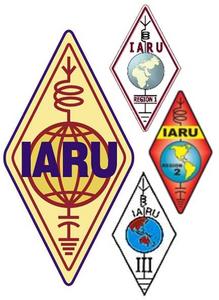 phone. The ARRL Headquarters station for the event will be W1AW/5, organized by Steve London, N2IC, in New Mexico. NU1AW/7 in Washington will be the IARU headquarters station, organized by Mark Tharp, KB7HDX. London said the W1AW/5 operation will take place from six sites spread across New Mexico, with eight operators. He's hoping things will go smoothly, but he's also been keeping an eye on the weather.
phone. The ARRL Headquarters station for the event will be W1AW/5, organized by Steve London, N2IC, in New Mexico. NU1AW/7 in Washington will be the IARU headquarters station, organized by Mark Tharp, KB7HDX. London said the W1AW/5 operation will take place from six sites spread across New Mexico, with eight operators. He's hoping things will go smoothly, but he's also been keeping an eye on the weather.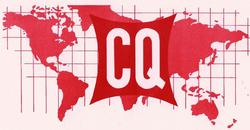 "During the public discussion around this disqualification, a section of the log on 160 meters was pointed out as being suspicious," the committee said. "Further checking revealed a run of 47 QSOs that were added to the log when TO7A could not be detected on the air by RBN [Reverse Beacon Network] or SDR recordings. In total, as many as 123 QSOs representing 22 additional multipliers were padded into the log." The CQ WW Contest Committee said the "particular pattern" of the suspicious contacts made it clear that they were added deliberately after the contest to fill in rest or break periods.
"During the public discussion around this disqualification, a section of the log on 160 meters was pointed out as being suspicious," the committee said. "Further checking revealed a run of 47 QSOs that were added to the log when TO7A could not be detected on the air by RBN [Reverse Beacon Network] or SDR recordings. In total, as many as 123 QSOs representing 22 additional multipliers were padded into the log." The CQ WW Contest Committee said the "particular pattern" of the suspicious contacts made it clear that they were added deliberately after the contest to fill in rest or break periods.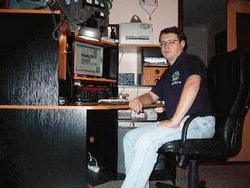
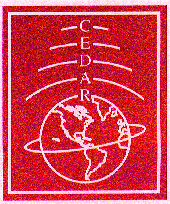 "The middle atmosphere is particularly difficult to study, as it is generally too high for sounding rockets and balloons, and too low for most satellites," explained Nathaniel Frissell, W2NAF, a graduate student at Virginia Tech who attended the CEDAR workshop. "Thus, it is difficult to make in-situ measurements, and remote sensing techniques are very important." Frissell said it's also very difficult, because of its size, to take sufficient measurements that truly characterize the whole Earth-space system.
"The middle atmosphere is particularly difficult to study, as it is generally too high for sounding rockets and balloons, and too low for most satellites," explained Nathaniel Frissell, W2NAF, a graduate student at Virginia Tech who attended the CEDAR workshop. "Thus, it is difficult to make in-situ measurements, and remote sensing techniques are very important." Frissell said it's also very difficult, because of its size, to take sufficient measurements that truly characterize the whole Earth-space system.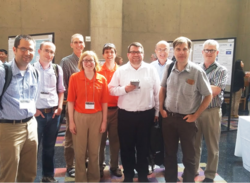
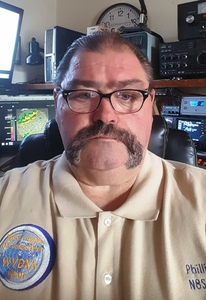
 "I am gratified to see The ARRL Letter reach the 100,000-reader mark. It is testimony to the excellent journalistic work of News Editor Rick Lindquist, WW1ME," said ARRL Publications Manager Steve Ford, WB8IMY. "It is astonishing to realize that, in terms of overall circulation, The ARRL Letter's readership is now exceeded only by QST magazine itself."
"I am gratified to see The ARRL Letter reach the 100,000-reader mark. It is testimony to the excellent journalistic work of News Editor Rick Lindquist, WW1ME," said ARRL Publications Manager Steve Ford, WB8IMY. "It is astonishing to realize that, in terms of overall circulation, The ARRL Letter's readership is now exceeded only by QST magazine itself."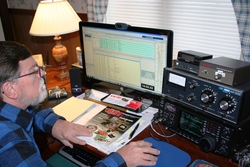
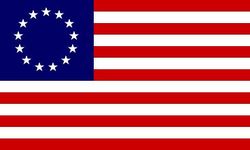 Certificates and endorsements will be available for working the 13 colonies stations, with a sticker for contacting all 13 and an endorsement for contacting WM3PEN in Philadelphia, where independence was declared in 1776. Those working WM3PEN will have a Liberty Bell added to their 13 Colonies certificates.
Certificates and endorsements will be available for working the 13 colonies stations, with a sticker for contacting all 13 and an endorsement for contacting WM3PEN in Philadelphia, where independence was declared in 1776. Those working WM3PEN will have a Liberty Bell added to their 13 Colonies certificates.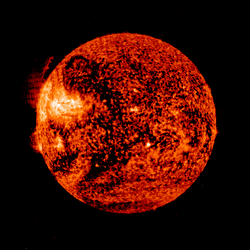 Average solar flux over June 25 through July 1 was 100.7, down from 130.8 over the previous 7 days. Average daily sunspot numbers declined from 71.6 to 35.9.
Average solar flux over June 25 through July 1 was 100.7, down from 130.8 over the previous 7 days. Average daily sunspot numbers declined from 71.6 to 35.9.







